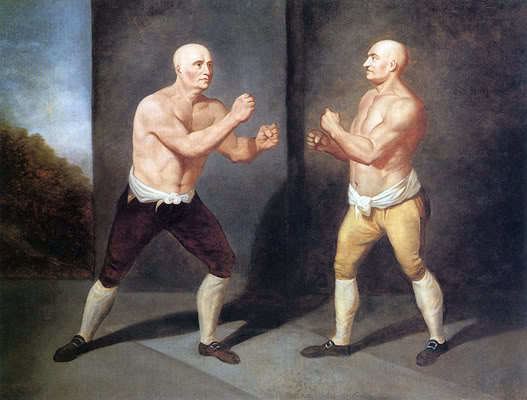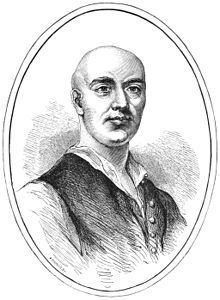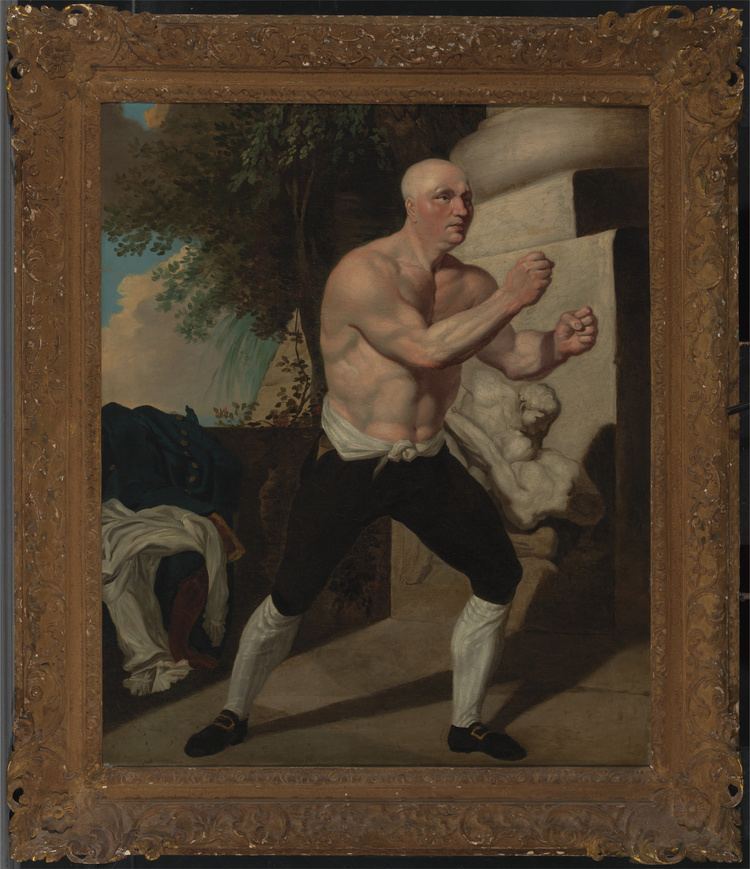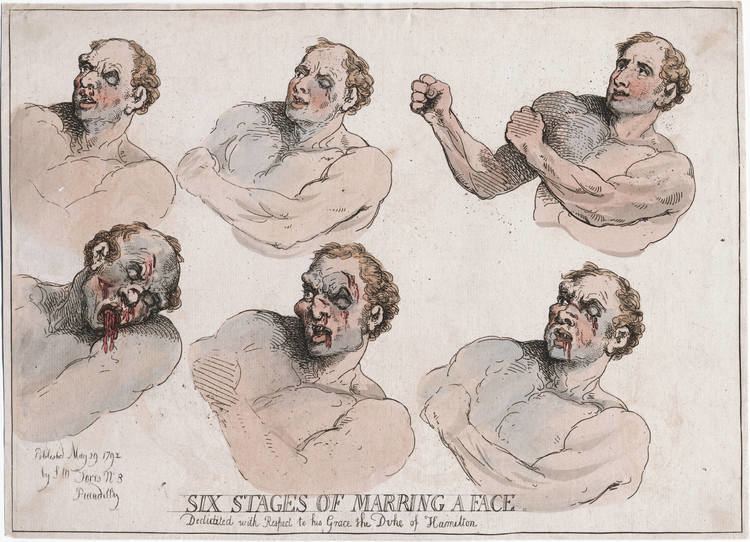Name Jack Broughton Martial art Boxing | Role Boxer | |
 | ||
Died January 8, 1789, London, United Kingdom | ||
Jack Broughton - The Father of Modern Boxing
John "Jack" Broughton (c. 1703 or 5 July 1704 – 8 January 1789) was an English bare-knuckle boxer. He was the first person to codify a set of rules to be used in such contests; prior to this the "rules" that existed were very loosely defined and tended to vary from contest to contest. His seven rules of how boxing would be conducted at his amphitheatre (the largest and most influential at that time) evolved later into the London Prize Ring rules which are widely regarded as the foundation stone of the sport that would become boxing, prior to the development of the Marquess of Queensberry rules in the 1860s.

Broughton was of obscure birth, he is variously described as being born in either London or Gloucestershire. He served his apprenticeship in the Port of London, initially working as a lighterman but eventually, in light of his physical prowess (Broughton was nearly 6 feet tall and very muscular, weighing over 14 stone, or approximately 196 pounds), working as a waterman rowing passengers on the River Thames. In 1730 he won a major annual race on the Thames, Doggett's Coat and Badge race which is contested to this day, against a number of other watermen who had recently finished their apprenticeships.

Throughout the 1730s Broughton fought semi-professionally and earned a sizable reputation. Although records of fights fought in this era are few, there is no evidence that Broughton ever lost a fight. Following his retirement, he certainly claimed to have been undefeated, and this is also claimed by Captain Godfrey, a man who had cudgelled with James Figg and knew the fighters of the era well. In his treatise on boxing published in the mid-1740s. Broughton's fights often attracted sizeable audiences, so much so that on one occasion a spectator was crushed to death. Another of his fights, the epic and fatal Broughton v. Stevenson, served as the inspiration for Paul Whitehead's poem The Gymnasiad.

Broughton inflicted a heavy defeat on George Taylor, who was the head of Figg's amphitheatre after the latter's death.

As a result of his status in boxing, and with help from a number of wealthy patrons, he opened his own amphitheatre in 1743, in Hanway Road, near Oxford Street. Here, Broughton and his team staged boxing exhibitions.
Broughton drew up a set of rules for the sport that were regarded as definitive for around 100 years. The rules stipulated that a round would last until a man went down, and there was to be a 30-second interval between rounds.
In 1750 he fought Jack Slack. After 14 minutes of the fight, as a result of a blinding punch, Broughton was unable to see his man, and thus had to retire from the bout. The Duke of Cumberland, Broughton's patron at the time was said to have lost thousands of pounds on the match. After the fight he closed his amphitheatre, and instead ran an antiques business.
Following his death in 1789, Broughton was interred at Westminster Abbey. His headstone did not bear an epitaph for nearly 200 years because the Dean of the Abbey felt that the epitaph that Broughton had requested was inappropriate. It was not until 1988 that Broughton's request was fulfilled and the words "Champion of England" were engraved on the headstone.
Broughton developed a system of parrying, "hitting away" (striking on retreat), stopping and barring blows, and his defence, according to contemporaries, was so complete as to render him nearly untouchable. His code of 7 rules formed guidelines for the sport until the London Prize Ring Rules (1838, which expanded upon Broughton's code). Broughton also was the inventor of the first boxing gloves, called "muffles", which were used in his boxing academy by his students to "effectually secure them from the inconveniency of black eyes, broken jaws and bloody noses..." They were never used in the professional prize ring.
Broughton was one of the original inductees of the International Boxing Hall of Fame, inducted as a pioneer of the sport.
